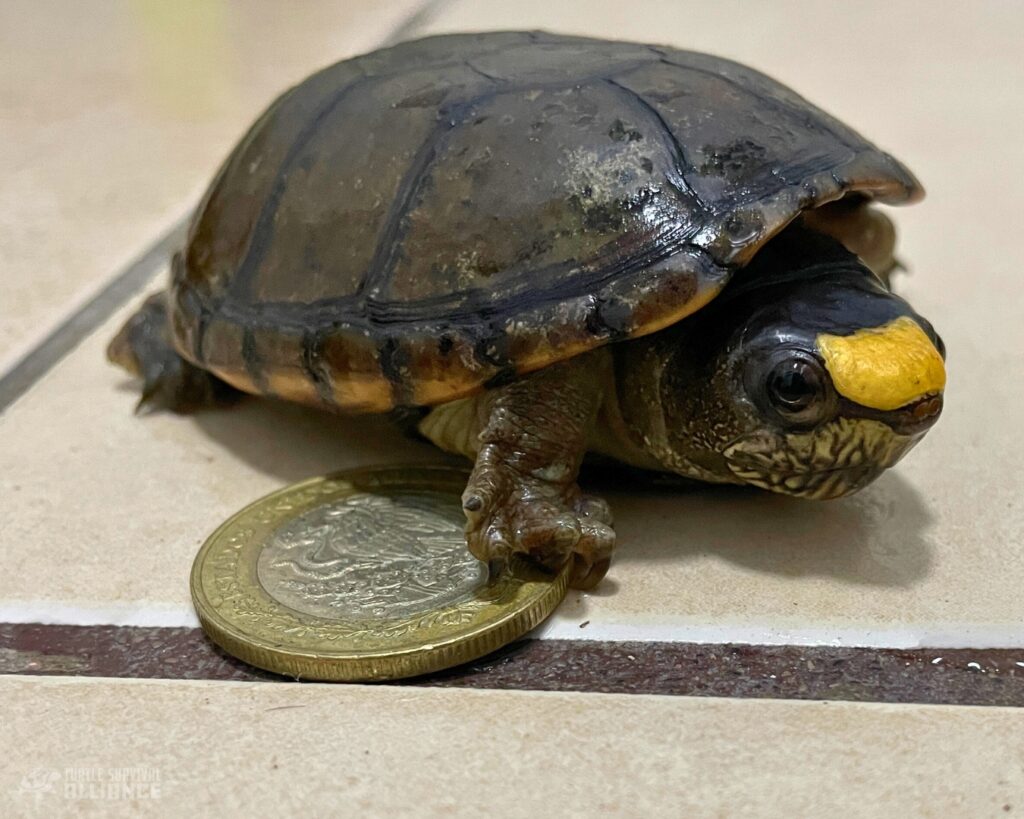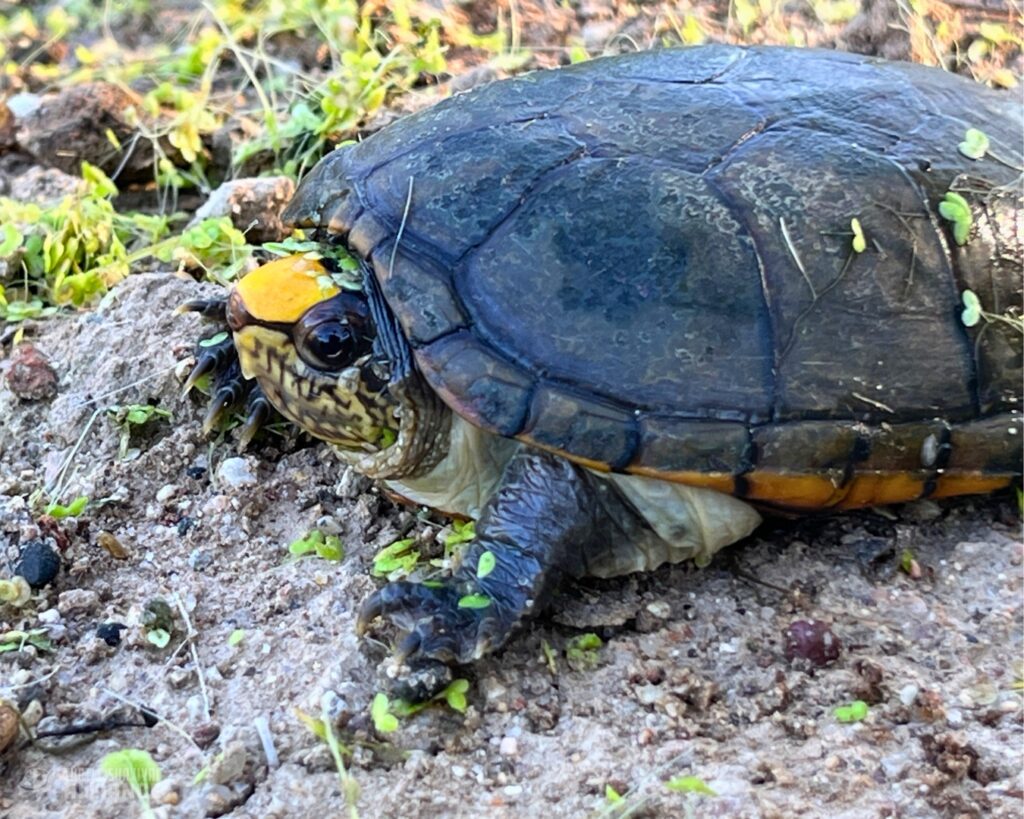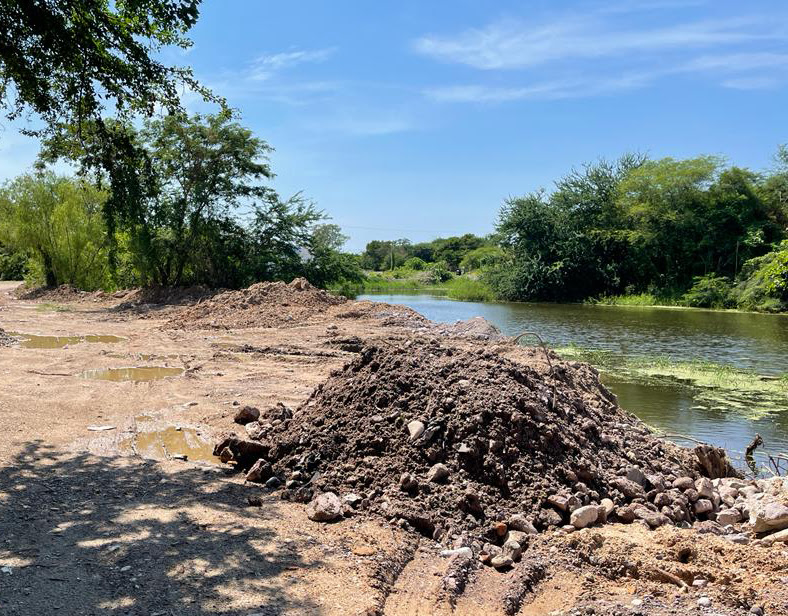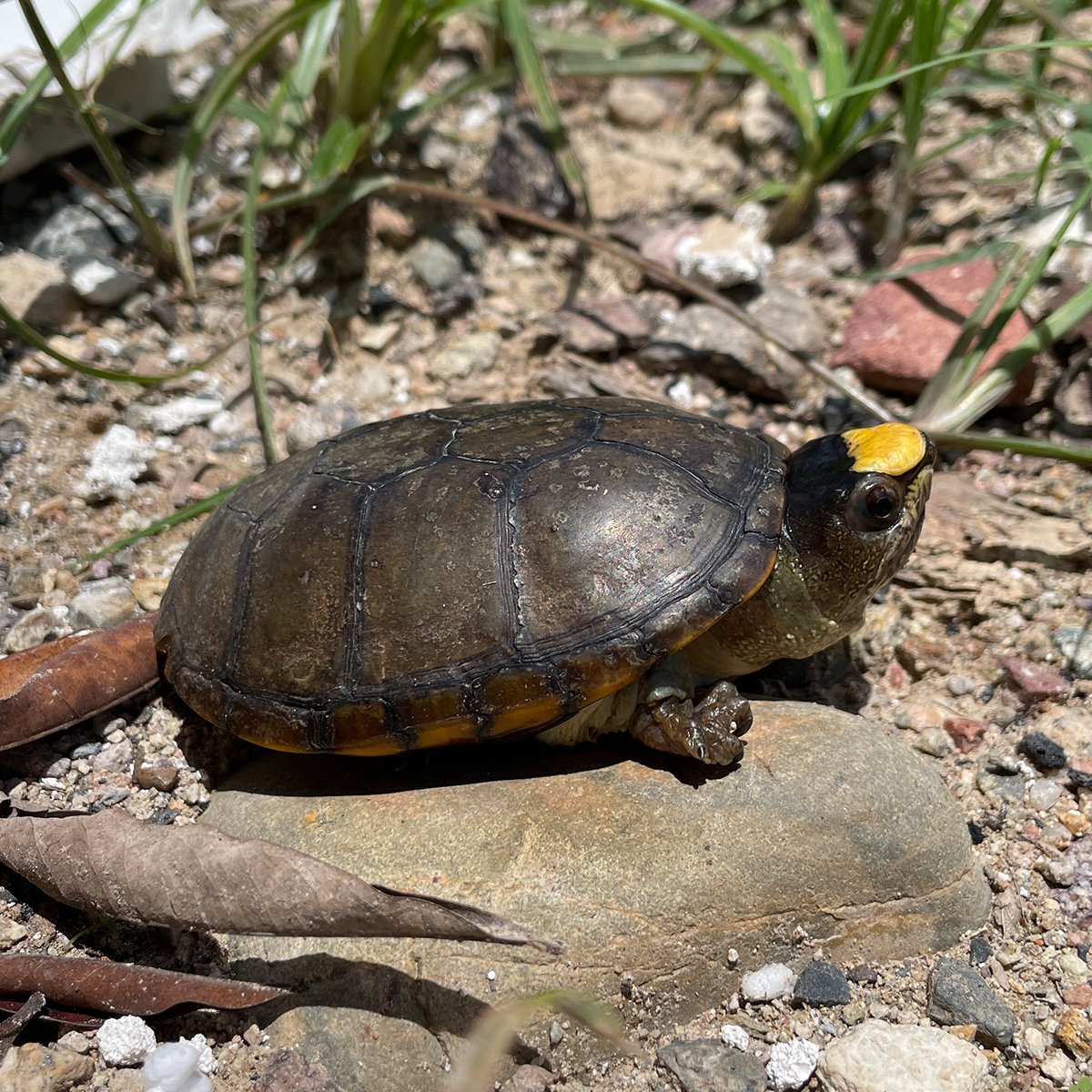Mexico’s Vallarta Mud Turtle:
A Little Turtle in Need of a Big Helping Hand
By Andrew Walde, Director of Conservation and Science
As I look out the airplane window, I reflect; after a 20-year absence, I’m about to land in Mexico for the third time this year. This mission is a little different—no thorn scrub, no tropical forests, just the concrete jungle that is Puerto Vallarta. Here, luxury resorts, hotels, and rentals now span the entirety of the coastline of the Bay of Banderas. Tourism is flourishing, with millions descending on this port city each year to enjoy its beaches, nightlife, culture, and cuisine. Long before the city’s rise to prominence as a vacation destination, though, a diminutive turtle called—and still calls—Puerto Vallarta and the Ameca Valley home.
In a shock to the turtle world, in 2018, a new species of turtle featuring a bright yellow patch on its nose was described from a ditch—literally—inside Puerto Vallarta. And so began the quest for more information on the aptly named Vallarta Mud Turtle (Kinosternon vogti).
Regarded as the smallest freshwater turtle in the world, the Vallarta Mud Turtle rocketed into the top tier of most endangered turtles in the world. Contrary to numerous counterparts on this unfortunate list of species, which often still boast a relative abundance of habitat but have fallen victim to relentless exploitation for the food, pet, and traditional medicine trades, the Vallarta Mud Turtle faces a unique challenge—the majority of its habitat sits directly beneath the homes and businesses of a burgeoning metropolis. In fact, our current knowledge is that this tiny, beautiful, yet ill-fated turtle now exists in just five small wetlands where a valley of floodplain wetlands once laid.

I was met at the airport by Taggert Butterfield, co-founder of Estudiantes Conservando la Naturaleza, or Students Conserving Nature (SCN). Taggert and Students Conserving Nature partner with the Turtle Survival Alliance to learn as much as we can about this species to help direct conservation efforts. It is still early, so Taggert swoops me off to the beach for a late lunch, where he tells me all about his findings.
On our way to his place to pick up traps and bait, we swing by a pond known to have Vallarta Mud Turtles. As we bump down the dirt roads approaching the pond I’m struck by the neighborhood, construction debris, and garbage. How can anything survive here, let alone one of the rarest turtles in the world? Mere seconds after this thought, I yell out, “STOP!” There on the side of the road is a smooth turtle-esque “rock”—a Vallarta Mud Turtle. Taggert can’t believe it as it’s rather early in the evening for a turtle to be out and on the move, but he explains that there is a dry drainage that connects this pond to another; the turtle, an adult female, has clearly traversed the dry bed. We quickly process her, giving her a unique shell-notch ID, and, upon examining her, learn she is gravid with eggs. How exciting is that!!??
We set her back down to continue on her way, wishing her and her precious load great success. As we continue on, the site ahead is less exciting; dozens of dump trucks have been filling in the pond with crumbled concrete waste. But the little four-inch egg-laiden female we just found gives us hope. Taggert brings additional optimism as he discusses his current talks with the city to restore and transform this wetland into a small protected park, benefitting both the residents of Puerto Vallarta and its endangered mud turtle.
We return to the wetland just before dark to set traps, and, in what can only be seen as a miracle, there on the same stretch of road is another Vallarta Mud Turtle. This time it is a much smaller turtle, a male with his bright yellow nose clearly visible from the truck. We can’t help but wonder if he was trailing the female from two hours earlier. We set our traps, bidding them good luck, with a promise to return in the morning. If you’ve never trapped turtles for science, let me tell you, the anticipation fills your being. When you approach a trap, your mind is going full tilt. “Will there be a turtle? How many? What species?” A colleague years ago compared it to opening a present on Christmas morning—the unbridled curiosity and excitement is the same.

Over the next three days we visit several wetlands that hold potential for Vallarta Mud Turtles, as well as the five known habitats occupied by this precious little turtle. All of them are heavily degraded and impacted by the surrounding developments. Worse yet, some of the “best habitat” is slated for sale or development. Sadly, this is prime real estate for the ever-expanding Puerto Vallarta. While moving around the extremely small known range of this species, we discuss options. They are going to need to be drastic—with time being of the utmost essence.

Working with the city of Puerto Vallarta, removing turtles slated to be buried by development, establishing assurance colonies, investigating translocation, and creating habitat are all at the top of the list.
Conserving the world’s tiniest turtle will not be a tiny effort.
All photos courtesy of Andrew Walde and Taggert Butterfield.
